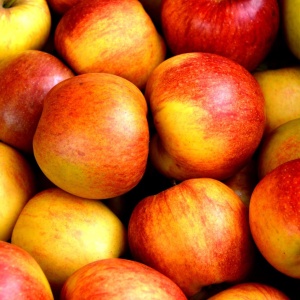
People tend to underestimate the greenhouse gas emissions and energy use associated with different food types, according to this paper, but are likely to buy lower-emission food types when provided with information on greenhouse gas emissions.
In the first part of the study, people were asked to estimate energy use and greenhouse gas emissions produced by a range of electrical appliances and by different food types. Both emissions and energy use were underestimated for all food types and almost all electrical appliances, with the difference between actual and estimated values being greater for foods than for appliances. The figure below shows average estimates of greenhouse gas emissions.

Image: Figure 2, Camilleri et al. The red line shows estimated food emissions against actual emissions, using a log-log scale. Accurate estimates would fall on the grey 45° line.
In the second part of the study, people received money for participating in the study and were asked to use some of that money to buy cans of beef or vegetable soup by choosing from a menu on a computer screen. Participants actually received their selected cans of soups at the end of the study, and were questioned on their environmental viewpoints only after making their selection of cans. When the cans had carbon labels (in addition to other information, such as nutrition, that was also provided to a control group), participants purchased fewer cans of beef soup than when no carbon label was present.
Abstract
Food production is a major cause of energy use and GHG emissions, and therefore diet change is an important behavioural strategy for reducing associated environmental impacts. However, a severe obstacle to diet change may be consumers’ underestimation of the environmental impacts of different types of food. Here we show that energy consumption and GHG emission estimates are significantly underestimated for foods, suggesting a possible blind spot suitable for intervention. In a second study, we find that providing consumers with information regarding the GHG emissions associated with the life cycle of food, presented in terms of a familiar reference unit (light-bulb minutes), shifts their actual purchase choices away from higher-emission options. Thus, although consumers’ poor understanding of the food system is a barrier to reducing energy use and GHG emissions, it also represents a promising area for simple interventions such as a well-designed carbon label.
Reference
Camilleri, A.R., Larrick, R.P., Hossain, S. and Patino-Echeverri, D., 2018. Consumers underestimate the emissions associated with food but are aided by labels. Nature Climate Change, p.1.
Read the full paper here. See also the Foodsource resource Which food products have the highest overall impacts?
In the Research Library, we have several existing entries on carbon labelling, including:
- Tyndall Centre reports on carbon labelling (2008)
- Carbon labelling of grocery products: Public perceptions and potential emissions reductions (2011)
- Customer Response to Carbon Labelling of Groceries (2011)
- Carbon Labelling and Low-income Country Exports: A Review of the Development Issues (2009)
- RELU briefing: Does carbon labelling give developing countries a bad deal? (2009)







Post a new comment »